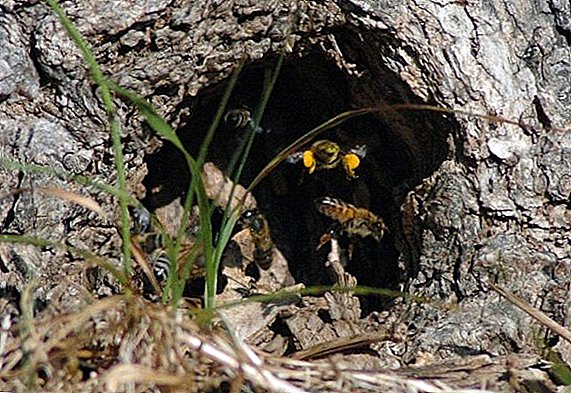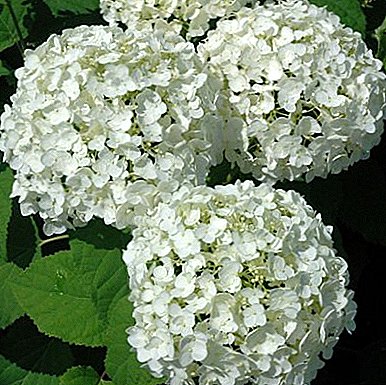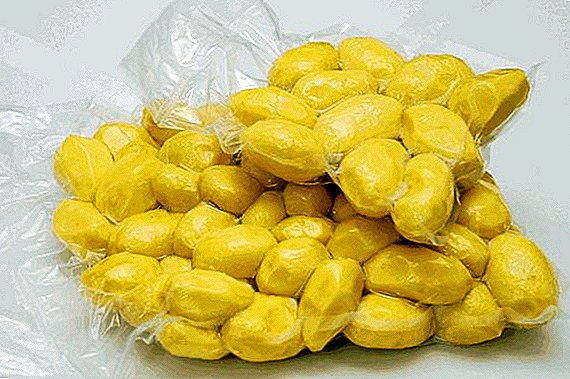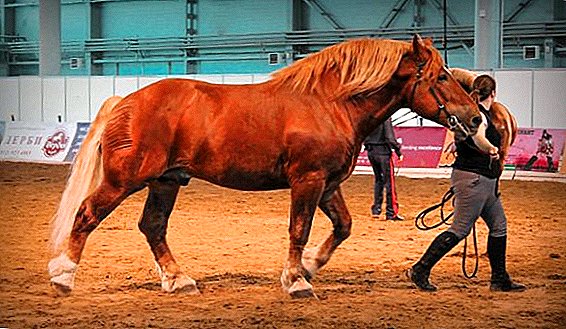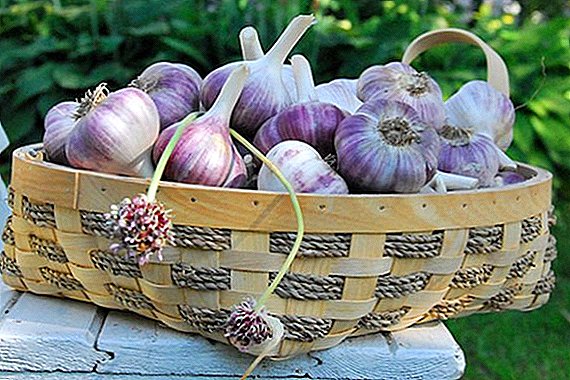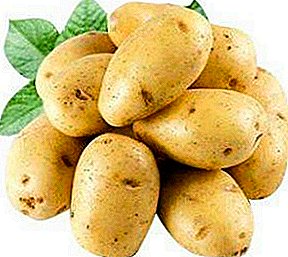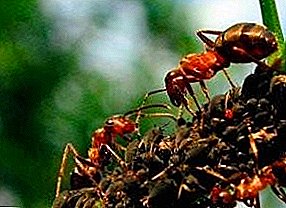 A great many proverbs and sayings praise the benefits carrots. Since childhood, we hear the ode to this vegetable: "Carrots add blood, ”“ Eat carrots, and eyes will see well. ”Everyone in childhood heard it from their parents. Carrot love adults and children. She is among the top ten vegetables on our table. Without it you will not cook many dishes, so we try to prepare it for the winter. Along with potatoes, beets and cabbage Carrots - one of the most important vegetables in the human diet. In winter, this is a real storehouse of vitamins. But often even skillful and diligent gardeners do not manage to grow a decent crop of carrots. Viral diseases of carrots, pests - the causes can be great variety.
A great many proverbs and sayings praise the benefits carrots. Since childhood, we hear the ode to this vegetable: "Carrots add blood, ”“ Eat carrots, and eyes will see well. ”Everyone in childhood heard it from their parents. Carrot love adults and children. She is among the top ten vegetables on our table. Without it you will not cook many dishes, so we try to prepare it for the winter. Along with potatoes, beets and cabbage Carrots - one of the most important vegetables in the human diet. In winter, this is a real storehouse of vitamins. But often even skillful and diligent gardeners do not manage to grow a decent crop of carrots. Viral diseases of carrots, pests - the causes can be great variety.
White rot (sclerotinia)
The occurrence of white rot or sclerotinia is preceded by the formation in the root tissue of the fungus Sclerotinia sclerotiorum (Lib.). Unstable to this disease culture: beans, carrots, cabbage and pumpkin cultures. In the places of vegetable damage wounds are formed, on which the fungus-pest begins to develop.
 Mycelium covers the wound fluffy white bloom. Growing, mycelium is spreading to the entire root. Places appear seals white and black. This is the sclera of the fungus. They do not lose their vitality for a long time both in the soil and in the air.
Mycelium covers the wound fluffy white bloom. Growing, mycelium is spreading to the entire root. Places appear seals white and black. This is the sclera of the fungus. They do not lose their vitality for a long time both in the soil and in the air.
Appearing among the vegetables laid for wintering, the fungus infects all nearby roots. The temperature mode of storage does not matter, since the spores of the fungus are active in the temperature range from 15 to 22 ° C. The soil contaminated with the fungus Sclerotinia sclerotiorum is the main source of the disease. Therefore, it is necessary to avoid contaminated soils and do not plant vegetables and root crops on them for 3-5 years.
The liming of acidic soils and the refusal to add phosphorus to the soil helps to combat the disease. But the introduction of potash fertilizer will reduce the risk of infection of carrots. For decontamination of white rot, uterine roots in the fall (before laying in the basements) are treated with TMTD, using 6-8 kg of the drug per 10 liters of water. This solution is enough to process 1 ton of mother liquors.
Carrots intended for food are powdered with chalk dust. It promotes storage until spring.
Important! When it gets into damp areas, white rot spreads faster.
Felt rot (rhizoctoniosis)
 The cause of the disease is the soil fungus Rhizo-ctonia carotae Red. Carrot rot or rhizoctoniosis of carrots develops rapidly in cold winter stores. With the development of this disease affects more than 10% of the deposited carrots.
The cause of the disease is the soil fungus Rhizo-ctonia carotae Red. Carrot rot or rhizoctoniosis of carrots develops rapidly in cold winter stores. With the development of this disease affects more than 10% of the deposited carrots.
The incubation period of the disease is up to three months. On the carrot appear dry spots of a round shape up to 6 mm in diameter. These sores are covered with white mold - the fungus mycelium. Small ulcers often coalesce into a common spot. Only the skin of the root is damaged. Spores of the fungus are transmitted through the soil, but the infection can come from old container boxes.
The fungus accumulates in the soil with perennial mono-plantations. Fungus spores do not survive the sowing of areas with green manure.
Important! The probability of the disease is reduced by several times when laying carrots for storage in bags of polyethylene.
Wet rot (bacteriosis)
 The disease is provoked by the phytopathogenic bacteria of the genera Pseudomonas and Bacillus. Wet spots appear on carrots. Getting into the basement, such carrots instantly rot, infecting neighboring roots.
The disease is provoked by the phytopathogenic bacteria of the genera Pseudomonas and Bacillus. Wet spots appear on carrots. Getting into the basement, such carrots instantly rot, infecting neighboring roots.
Such bacterial decay develops on damaged carrots with broken or cut tips. Bacteriosis of carrots develops rapidly in the presence of warm air in the basement (5–30 ° C) and dampness.
Gray or Kagatnaya rot (botridiosis)
Botryttis cinerea Fr - provocateur of such a disease. Gray rot is less common. This disease is less common than black or white rot. Probably the formation of gray rot in carrots in its close proximity to the cabbage forks in the store. Root crop covered with brown watery damage. The mycelium grows on them and very quickly braids the whole carrot.
 Rotting carrots become softened, with brown pulp. Often affects slightly carrots frozen or stored in a cold basement. With proper observance of crop rotation and alternation of crops, with timely whitewashing and disinfection of cellars, harvesting of root crops without mechanical damage - infection with gray rot can be avoided.
Rotting carrots become softened, with brown pulp. Often affects slightly carrots frozen or stored in a cold basement. With proper observance of crop rotation and alternation of crops, with timely whitewashing and disinfection of cellars, harvesting of root crops without mechanical damage - infection with gray rot can be avoided.
Dry or brown rot (fomoz)
Root disease fomozom causes the development of the fungus Phoma rostrupii Sacc. This disease can strike and make unsuitable for storage up to half of all the carrots planted in the first year of cultivation. But carrot seedlings (carrots are already the second year of cultivation) are completely destroyed by it. On the stems of seed plants (in the forks of the stems) gray-brown elongated spots are formed.
When developing, necrotic spots make the stem brittle and dry. In the first year of growing fomoz on carrots, it manifests itself in the reddening of the leaf, the appearance of gray or brown spots on it. Then the affected tops dry and die. Light yellow or red spots of various shapes appear on the leaves infected with fomoze.
From the tops of the fungus grows in carrot tissues. Infection with this fungus is caused by the apical rot of carrots. If dry rot spreads quickly, then the leaves of the carrot die. The plant can dry out completely or partially.
When stored in the basement, infection of a carrot with a fungus progresses, and gray spots or stripes slightly imprinted in the carrot appear on the roots. Over time, in the places of the appearance of spots, soft tissues penetrated by mycelium rot. Then these damages dry up, and the carrot becomes rotten. Damages on carrots look like dry ulcers of dark brown or brown color.
 Sometimes an infectious infection can nap in a visually healthy root without developing. And only being planted in the ground next year such carrots die without creating full-fledged seed plants. If the vegetable is cut lengthwise, the middle will be with brown rot.
Sometimes an infectious infection can nap in a visually healthy root without developing. And only being planted in the ground next year such carrots die without creating full-fledged seed plants. If the vegetable is cut lengthwise, the middle will be with brown rot.
If the diseased plant is not found in time, it will become a source of infection and infect the entire plantation of seed plants. Before putting vegetables into storage, the basements are disinfected using formalin solution (1 part formalin per 100 parts water) or copper sulfate (1 part copper sulfate per 45 parts water).
Additional fumigation of basements with sulfur (60 g of sulfur per 1 m3) is carried out. Damaged root crops are carefully sorted and rejected. Bookmark storage is carried out not earlier than the established temperature of 4 - 5 ° C. Even small sub-zero temperatures form rot and mold on carrots.
It is advisable to plant them before sanitizing mother plants of carrots. To do this, the roots are soaked in a container with a 5% suspension of foundationol. Take 50% s.p. at the rate of 0.2-0.3 kg of the drug per 100 kg of carrots. After wintering on the half-rotten remains of plants, the fungus does not become less dangerous and survives at frosts above -25 ° C. Therefore, to take quarantine measures against the disease, all the remnants are burned.
Fertilizers with phosphorus and potassium increase resistance to damage by any fungal diseases. Uncropped carrots on the beds also increase the risk of damage to the rhizomes by fomozy. In the process of growth, seed carrots need to be treated with 1% Bordeaux liquid at the rate of 0.6-0.8 l / m2. Processing is carried out on the leaf of the plant.
Did you know? Increased dose of nitrogen fertilizer increases the risk of carrot fomozom.
Black Rot (Alternaria)
 The cause of the carrot disease is black rot, the fungus A. Radicina. It contributes to plant infection with leaf spot. Hot and humid weather with winds and frequent rains is the environment where this disease develops. With a massive infection with brown spot, a third of the entire crop can be lost.
The cause of the carrot disease is black rot, the fungus A. Radicina. It contributes to plant infection with leaf spot. Hot and humid weather with winds and frequent rains is the environment where this disease develops. With a massive infection with brown spot, a third of the entire crop can be lost.
The content of sugars and carotene in root crops decreases, the carrot itself grows small and curved. The plant dries out. Disease pathogens can persist for a long time in seeds, leaves, carrot roots. Carrier infection is wild carrots.
Spores of the fungus spread the wind and insects. Black rot of carrot appears as a result of heavy evening watering. In the preliminary digging of beds for carrots, no fresh manure is used, since an excess of nitrogen also contributes to the disease of plants with black rot. The signs of the disease are similar to the disease of chalcosporosis, and the defeat of Alternaria in the winter during basement storage is very similar to the disease of white rot or Fusarium.
This fungal disease of carrots develops rapidly at 85% air humidity, temperatures above 20 ° C and when in an alkaline and neutral environment. In the fight against the disease, many growers use the fungicides "Falcon" and "Prozaro".
Brown spot
Carrots can get brown leaf spot. The causative agent of this disease is a mushroom A. Dauci. The first signs that the bed is infected with spores of the fungus, gives carrot tops. In some places the leaves become dirty-brown and brittle. After a while, the whole bed becomes infected. The leaves of carrots dry. Carrots rhizomes suffer most from the disease. Usually the affected area of the root itself is no more than 1 cm wide and almost to the middle of the root. There are several such spots on carrots. Infection with this fungus is the reason why carrots rot in the ground.
 Even if in the autumn the gardener carefully selects for storing intact, at first glance, roots, carrot-infected mushroom is poorly stored in the cellar. During winter storage, dark spots affected by rotten spots appear on the bed and it just rot.
Even if in the autumn the gardener carefully selects for storing intact, at first glance, roots, carrot-infected mushroom is poorly stored in the cellar. During winter storage, dark spots affected by rotten spots appear on the bed and it just rot.
How to deal with the disease:
Be sure to observe crop rotation and return the carrot to this bed can be no earlier than four years. Before sowing, carrot seeds are disinfected in a pale pink solution of potassium permanganate and water. After processing, rinse the seeds under running cold water. Such processing of carrots ruins the spores of fungi in the seeds.
Another good way to disinfect seeds is to soak them in hot water (temperature not higher than 50 ° C). We fold the seeds into a gauze knot and fill it with hot water. After 10 minutes, put the seed bundle in a container with cold water. As soon as the first signs that the carrot became ill, appeared, we take urgent measures. It is best to sprinkle carrots "Immunocytophyte" or "Epin-extra." The drug "Evin" is also great.
Timely fertilized plants can not get sick at all, as they have a high immunity to diseases. Top-dressing with potash and phosphate fertilizers will not allow carrots to get sick and increase the yield. On an infected garden bed never leaves plants for seed.
The remains of diseased plants (tops and rhizomes) need to be burned, since the fungal pathogen remains in them even during decomposition. It is undesirable to use such contaminated organics for compost.
Seed plants taken only with absolutely healthy plants. In order to avoid an outbreak of the disease in a rainy and damp summer they spend several times loosening the row spacing. So the soil is dried.
Root deformation
Causes of the formation of ugly carrot roots: 
- An ugly carrot with a full or partial deformation of the roots can grow on the soil into which not rotted manure was introduced before plowing. An excess of nitrogen leads to the separation of carrots into three to five separate roots with a common apex and cracking. A cracked carrot is not suitable for storage and starts to rot very quickly.
- Densely sown carrot seeds. After the first shoots and subsequent weeding, when 3-4 full leaves appear on the plant, thinning of the shoots is necessary. If this is not done, the carrot will not have room for growth and, seeking it, the carrot grows in a curve. With a very strong cramped sometimes neighboring plants just intertwine with each other. This carrot is theoretically suitable for food, but in practice it is mainly thrown away or goes to animal feed. Such carrots cannot be peeled for food. The correct scheme of sowing carrots: sowing to a depth of at least 2 cm and subsequent thinning with a distance of 3 - 4 cm between plants.
- If the plowing (digging) of the bed was not deep enough, then when the carrot grows to a solid layer of soil, it is bent. Loose soil is vital for root crops.
- Carrots do not like sowing in lowlands with high soil moisture. In such conditions, spores of fungi develop very quickly and infect root crops, further developing and progressing in them. If your garden is located exactly in the lowland, weekly weeding between the rows is recommended. This will help dry the soil.
- The invasion of nematodes on carrots can leave you without a crop. Nematodes are worms pests. They live in the soil and damage all root crops, feeding on their pulp. Worm size up to 1 mm. But their huge amount makes the contaminated soil unsuitable for use.
Did you know? A great way to fight a nematode is to plant a bed of marigolds. Marigold flowers are known by the national name - black-necked. On a bed planted with marigolds the nematode dies. And next year it can be sown again with healthy vegetables.
Mealy dew
 Powdery mildew plant disease is a real scourge of our gardens. This disease can be provoked by two types of fungi: Erysiphe umbelliferarum f.dauci and Leveillula umbelliferarum 1. dauci. Mealy dew ruins cucumbers, zucchini, pumpkins, carrots and shrubs of black and white currants.
Powdery mildew plant disease is a real scourge of our gardens. This disease can be provoked by two types of fungi: Erysiphe umbelliferarum f.dauci and Leveillula umbelliferarum 1. dauci. Mealy dew ruins cucumbers, zucchini, pumpkins, carrots and shrubs of black and white currants.
The first signs of an incipient disease: yellow spots on carrots tops and leaves of shrubs and pumpkin. On the lower side of the leaves, sheltered from the sun, a little fluffy mycelium whitens. Spots grow over 3 - 7 days, the growth of the fungus causes the death of leaves affected by the disease.
In root crops, leaf blight does not cause the death of the rhizome, but it grows underdeveloped and ugly. Mealy dew also affects carrot seed plants. They are covered with white bloom of mycelium, the stems wither without forming seeds in the testes.
The development of the disease powdery mildew is preceded by high humidity. It can provoke frequent watering plantings on the sheet. One-time preventive treatments with fungicides are desirable even before the height of the disease. The first such treatment is carried out two weeks after the emergence of shoots.
Diseased plants are pollinated with ashes or crushed sulfur in dust. Handle planting Bordeaux mixture and various fungicides. Twice repeat treatments at weekly intervals. If the fungus on carrots has spread all the same, next year, plants with weak resistance to powdery mildew are not planted on this bed.
Important! All residues of infected plants are burned and no seeds are collected from infected testes.
Cercosporosis
 The causative agent of the disease is the pathogenic fungus Cercospora carotae. This disease is manifested in swampy lowlands or spreads quickly in rainy summer. At the beginning and end of July, the tops of plants are affected by small rust stains, in the center of the affected area a lighter middle.
The causative agent of the disease is the pathogenic fungus Cercospora carotae. This disease is manifested in swampy lowlands or spreads quickly in rainy summer. At the beginning and end of July, the tops of plants are affected by small rust stains, in the center of the affected area a lighter middle.
The leaves of the diseased carrot begin to curb. Gradually depressed by the development of fungal spores, the plant loses its leaves, root crops stop growing. Fungal spores winter well on plant debris and seeds.
Recommended complete burning of infected plants. In the fight against the disease, deep plowing of the soil with the turnover of the seam helps, the choice of varieties little prone to cercosphorosis. The use of Kvadris fungicides for vegetative carrots or Immunocytophyte, Trichodermin, Glyocladin preparations, decontamination of seeds and aeration of wet areas of the field will help to avoid diseases.
Prevention of carrot disease
 From the above, the rules follow, adhering to which you can avoid diseases on carrot ridges.
From the above, the rules follow, adhering to which you can avoid diseases on carrot ridges.
- Preliminary preparation and disinfection of basements for winter storage. We are preparing basements in August, drying and fumigating with sulfur at the rate of 50 g / m3 of the room, the walls are whitened with quicklime, which will further help to keep the storeroom dry.
- Dig carrots in dry weather. She is not kept long in the sun, avoiding stinking.
- It is not allowed to freeze root crops. After harvesting the carrots cut off the leaves, leaving a centimeter tail.
- Damaged plants harvested from the field and diseased tops are burned,
- When storing the carrot is placed in packing boxes, sprinkling dry sand or pollinating with chalk. Another reliable way to store carrots: make a clay mash, spreading clay and water to the consistency of the pancake dough. Carrots are dipped into this mass and laid out to dry. After complete drying, the carrot is folded in wooden boxes and carried away to storage in the basement.

- A very effective way to store carrots in plastic bags. Dry whole carrot folded in bags and tightly closed. Without air access, the carrot practically does not deteriorate.
- Several times during the winter you need to view the carrot bookmark. Rotten root crops are removed.
The degree of preservation of the harvest of carrots depends on how carefully the vegetable grower complies with all the recommendations and rules for its cultivation and storage. Следуя этим несложным правилам, можно сохранить урожай моркови без потерь.




